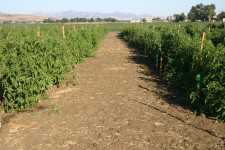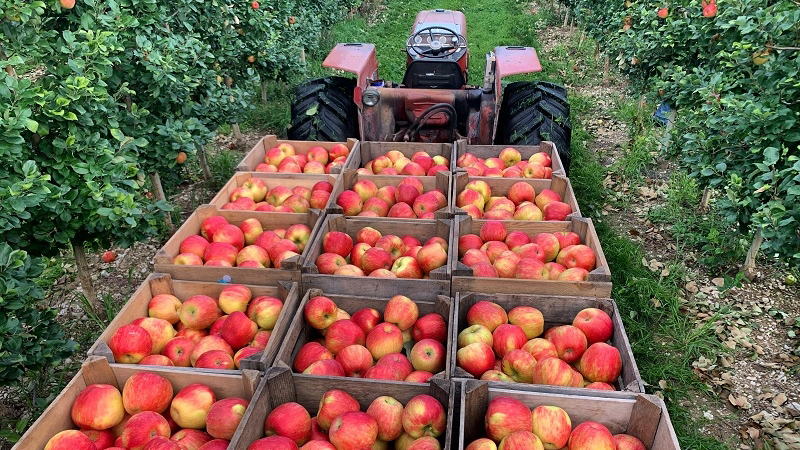The Good News About Water-Stressed Tomatoes

Virtually all direct market tomato growers — unlike their big-volume, wholesale counterparts — earn their spurs on how flavorful their fruit is, and therefore know that the vines have to be water-stressed at least somewhat. But that’s good news for growers in places like the Southwest and West Coast, says Aziz Baameur of University of California Cooperative Extension.
“By not using as much water, which is a big issue in places like California, it’s a win/win situation for growers,” says Baameur, a small farm advisor for growers in Santa Clara, Santa Cruz and San Benito Counties.
The question, then, is how much to stress those tomatoes? Baameur says the answer can vary by a huge amount, and depends on a number of factors, especially what variety is grown and where it is grown. Baameur has done trials on a number of varieties, but has particularly focused on Brandywine and Early Girl varieties, and despite his years of experience, he encountered a number of surprising results.
Location, Location, Etc.
First of all, location is everything. It starts with the soil type, which is critical. When you stress tomato plants you need a heavy clay or at least a loamy soil, as sand simply won’t do the trick. You’ll get too much of a good thing. “If you plant in sand, you won’t retain water, and you will stress the plants to death,” he says.
Also, make sure the roots are deep; plant at a depth of about 6 inches. Most growers — even those that shoot for the high-quality, direct-to-consumer market — often plant at a depth of 3 to 4 inches. Baameur says that’s too shallow if you really want to stress your plants more slowly, developing deep flavors and, consequently, commanding high prices. “Evapotranspiration (ET) occurs rapidly in the first few inches,” he says. “Even at 4 inches, it’s going to dry out fairly quick.””
Another factor in locating plants is the climate. He’s confident the same principles would apply in other areas as they did in his trials, which were done in the cool, coastal clime of Santa Cruz and the warmer Gilroy. But in, say, the summer sun of the San Joaquin Valley, the principles would be more pronounced.
Huge Variety Effect
As mentioned, in the first year of his trials, Baameur compared Brandywine and Early Girl varieties, and the differences were stark. For example, the yields for Early Girl were not significanly different at 100% ET and 12% ET. However, at 12% ET, the yields for Brandywine dropped by half.
However, and this a tremendously important difference if a grower needs to attain a certain size, the varieties reacted completely differently in the sizes of individual fruits. At 12% ET, 69% of the fruit produced by Early Girl was small fruit. At the remaining water treatments, 100, 75, 50, and 25% ET, the Early Girl produced anywhere from 54% to 60% large or extra-large fruit.
What really surprised Baameur was how Brandywine reacted to the 12% ET. While the total yield was down 50%, there was no change in the size of the fruit. In fact, across all irrigation treatments, Brandywine produced 87% to 97% of its fruit in the extra-large category.
The take-home lesson for direct market growers is to decide exactly what type of tomato you want to produce, then experiment with water levels, initially reducing the irrigation amount by 15, 20, and 25%, says Baameur. “If you can do that and get the same — or better — tomato without dropping yield,” he says, “it’s worth trying.”









